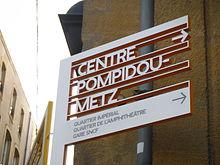
Georges Braque was a major 20th-century French painter, collagist, draughtsman, printmaker and sculptor. His most notable contributions were in his alliance with Fauvism from 1905, and the role he played in the development of Cubism. Braque's work between 1908 and 1912 is closely associated with that of his colleague Pablo Picasso. Their respective Cubist works were indistinguishable for many years, yet the quiet nature of Braque was partially eclipsed by the fame and notoriety of Picasso.

José Victoriano González-Pérez , better known as Juan Gris, was a Spanish painter born in Madrid who lived and worked in France for most of his active period. Closely connected to the innovative artistic genre Cubism, his works are among the movement's most distinctive.

The Centre Pompidou, more fully the Centre national d'art et de culture Georges-Pompidou, also known as the Pompidou Centre in English, is a complex building in the Beaubourg area of the 4th arrondissement of Paris, near Les Halles, rue Montorgueil, and the Marais. It was designed in the style of high-tech architecture by the architectural team of Richard Rogers, Su Rogers, Renzo Piano, along with Gianfranco Franchini.

Metz is a city in northeast France located at the confluence of the Moselle and the Seille rivers. Metz is the prefecture of the Moselle department and the seat of the parliament of the Grand Est region. Located near the tripoint along the junction of France, Germany and Luxembourg, the city forms a central place of the European Greater Region and the SaarLorLux euroregion.
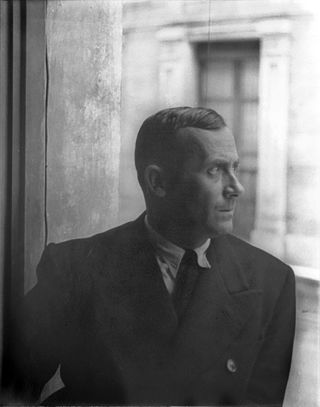
Joan Miró i Ferrà was a Spanish painter, sculptor and ceramist born in Barcelona. Professionally, he was simply known as Joan Miró. A museum dedicated to his work, the Fundació Joan Miró, was established in his native city of Barcelona in 1975, and another, the Fundació Pilar i Joan Miró, was established in his adoptive city of Palma in 1981.

The Museo Nacional Centro de Arte Reina Sofía is Spain's national museum of 20th-century art. The museum was officially inaugurated on September 10, 1992, and is named for Queen Sofía. It is located in Madrid, near the Atocha train and metro stations, at the southern end of the so-called Golden Triangle of Art.
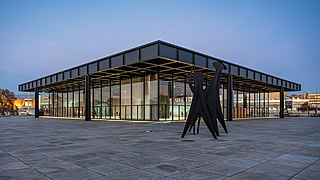
The Neue Nationalgalerie at the Kulturforum is a museum for modern art in Berlin, with its main focus on the 20th century. It is part of the National Gallery of the Berlin State Museums. The museum building and its sculpture gardens were designed by Ludwig Mies van der Rohe and opened on September 15th, 1968.
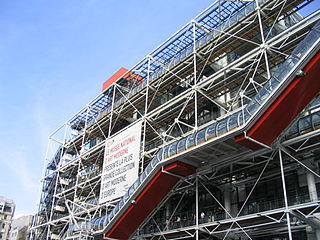
The Musée National d'Art Moderne is the national museum for modern art of France. It is located in Paris and is housed in the Centre Pompidou in the 4th arrondissement of the city. In 2021 it ranked 10th in the list of most visited art museums in the world, with 1,501,040 visitors. It is one of the largest museums for modern and contemporary art.

The Musée Picasso is an art gallery located in the Hôtel Salé in rue de Thorigny, in the Marais district of Paris, France, dedicated to the work of the Spanish artist Pablo Picasso (1881–1973). The museum collection includes more than 5,000 works of art and tens of thousands of archived pieces from Picasso's personal repository, including the artist's photographic archive, personal papers, correspondence, and author manuscripts. A large portion of items were donated by Picasso's family after his death, in accord with the wishes of the artist, who lived in France from 1905 to 1973.

The Staatsgalerie Stuttgart is an art museum in Stuttgart, Germany, it opened in 1843. In 1984, the opening of the Neue Staatsgalerie designed by James Stirling transformed the once provincial gallery into one of Europe's leading museums.

Yann Arthus-Bertrand is a French environmentalist, activist, journalist and photographer. He has also directed films about the impact of humans on the planet. He is especially well known for his book Earth from Above (1999) and his films Home (2009) and Human (2015). It is because of this commitment that Yann Arthus-Bertrand was designated Goodwill Ambassador for the United Nations Environment Programme on Earth Day.
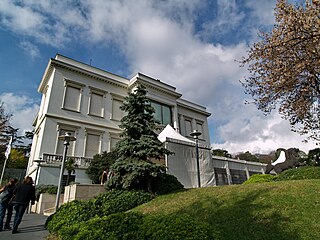
The Sabancı University Sakıp Sabancı Museum is a private fine arts museum in Istanbul, Turkey, dedicated to calligraphic art, religious and state documents, as well as paintings of the Ottoman era. The museum was founded by Sakıp Sabancı, and was opened in June 2002. Aside from permanent exhibitions, the museum also hosts national and foreign temporary exhibitions and, hosts cultural events on the weekends.

Julio González i Pellicer, born in Barcelona, was a Spanish sculptor and painter who developed the expressive use of iron as a medium for modern sculpture. He was from a lineage of metalsmith workers and artists. His grandfather was a goldsmith worker and his father, Concordio González, a metalsmith worker who taught him the techniques of metalsmith in his childhood years. His mother, Pilar Pellicer Fenés, came from a long line of artists.

Karl Gunnar Vougt Pontus Hultén was a Swedish art collector and museum director. Pontus Hultén is regarded as one of the most distinguished museum professionals of the twentieth century. He was the pioneering former head of the Museum of Modern Art in Stockholm and in the 1970s he was invited to participate in the creation of the Centre Georges Pompidou in Paris, where he was the first director of the Musée National d'Art Moderne (MNAM) in 1974–1981.

Musée d'Art Moderne de Paris or MAM Paris, is a major municipal museum dedicated to modern and contemporary art of the 20th and 21st centuries, including monumental murals by Raoul Dufy, Gaston Suisse, and Henri Matisse. It is located at 11, Avenue du Président Wilson in the 16th arrondissement of Paris.
Jesus Fuertes was a Cubist painter, who was initiated into the world of art by Salvador Dalí, and was described as a "true genius" by Pablo Picasso. Fuertes often chose women and cats as his subject matter. Several of his well-known works involve the use of shades of blue, which earned him the nickname "Painter of Blue".
Las Meninas is a series of 58 paintings that Pablo Picasso painted in 1957 by performing a comprehensive analysis, reinterpreting and recreating several times Las Meninas by Diego Velazquez. The suite is fully preserved at the Museu Picasso in Barcelona and is the only complete series of the artist that remains together. This is a very extensive survey work, which consists of 45 performances of the original picture, 9 scenes of a dove, 3 landscapes and a portrait of Jacqueline.
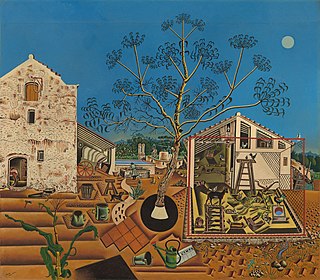
The Farm is an oil painting made by Joan Miró between the summer of 1921 in Mont-roig del Camp and winter 1922 in Paris. It is a kind of inventory of the masia owned by his family since 1911 in the town of Mont-roig del Camp. Miró himself regarded this work as a key in his career, describing it as "a summary of my entire life in the countryside" and "the summary of one period of my work, but also the point of departure for what was to follow." It is preserved in the National Gallery of Art in Washington DC, where it was given in 1987 by Mary Hemingway, coming from the private collection of American writer Ernest Hemingway, who had described it by saying, “It has in it all that you feel about Spain when you are there and all that you feel when you are away and cannot go there. No one else has been able to paint these two very opposing things.”
Laurent Grasso is a French conceptual artist living and working in Paris.
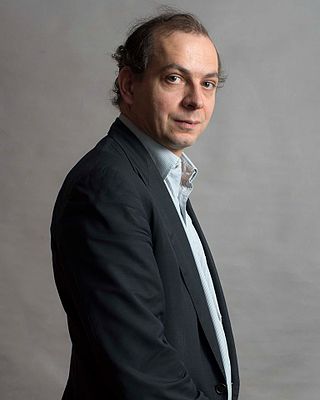
Laurent Le Bon is a French art historian who was the director of the Musée Picasso from 2014 to 2021. He is currently president of the Centre Pompidou.





